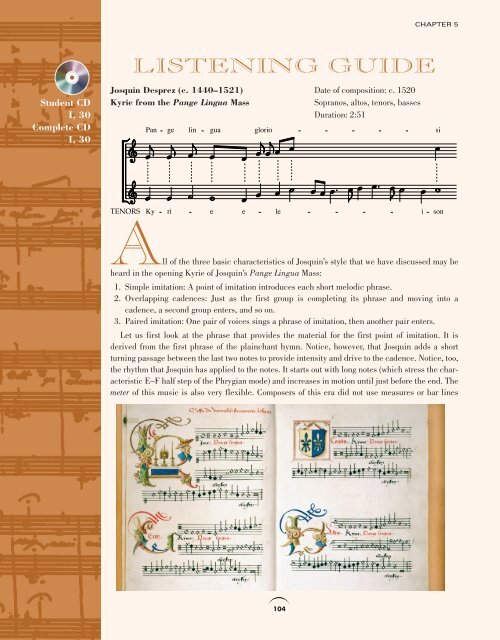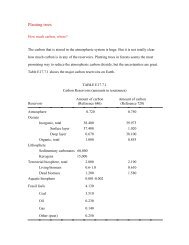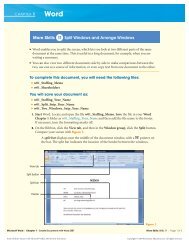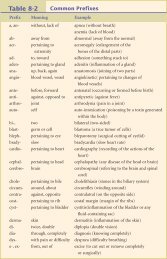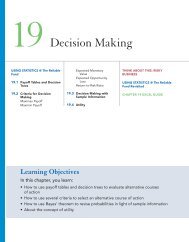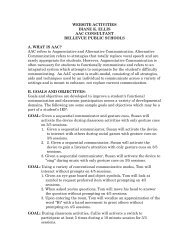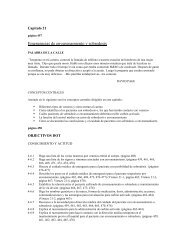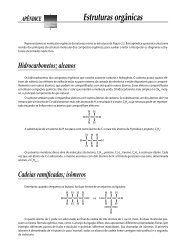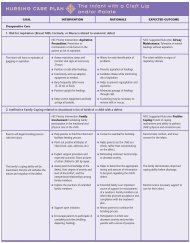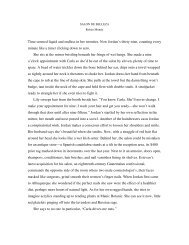LISTENING GUIDE
LISTENING GUIDE
LISTENING GUIDE
Create successful ePaper yourself
Turn your PDF publications into a flip-book with our unique Google optimized e-Paper software.
YUDKMC05_096-118hr 11-01-2007 14:36 Page 104<br />
Student CD<br />
I, 30<br />
Complete CD<br />
I, 30<br />
<strong>LISTENING</strong> <strong>GUIDE</strong><br />
Josquin Desprez (c. 1440–1521)<br />
Kyrie from the Pange Lingua Mass<br />
TENORS<br />
104<br />
Date of composition: c. 1520<br />
Sopranos, altos, tenors, basses<br />
Duration: 2:51<br />
CHAPTER 5<br />
All of the three basic characteristics of Josquin’s style that we have discussed may be<br />
heard in the opening Kyrie of Josquin’s Pange Lingua Mass:<br />
1. Simple imitation: A point of imitation introduces each short melodic phrase.<br />
2. Overlapping cadences: Just as the first group is completing its phrase and moving into a<br />
cadence, a second group enters, and so on.<br />
3. Paired imitation: One pair of voices sings a phrase of imitation, then another pair enters.<br />
Let us first look at the phrase that provides the material for the first point of imitation. It is<br />
derived from the first phrase of the plainchant hymn. Notice, however, that Josquin adds a short<br />
turning passage between the last two notes to provide intensity and drive to the cadence. Notice, too,<br />
the rhythm that Josquin has applied to the notes. It starts out with long notes (which stress the characteristic<br />
E–F half step of the Phrygian mode) and increases in motion until just before the end. The<br />
meter of this music is also very flexible. Composers of this era did not use measures or bar lines


